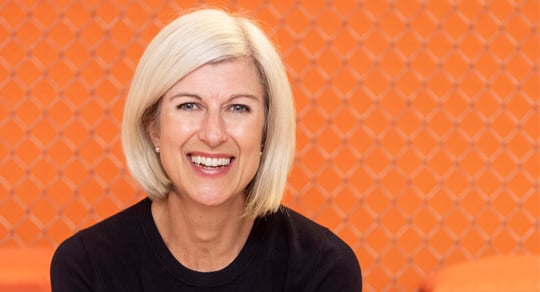How can the finance industry be more inclusive with communications?
Posted in
January 2021
3 minutes reading time
Judith Doherty — account director for Simple Usability, part of CDS — caught up with Financial Reporter recently about the role inclusive comms can play within the finance sector.

A financial adviser should be well-versed in understanding the importance of maintaining regular, informative and engaging communication with customers.
But are all industry professionals thinking about inclusivity when they’re drafting their next email on the latest mortgage deal or asking individuals to tap on their app and ‘read the small print’ when agreeing to their terms and conditions?
To embrace inclusivity, people must be provided with every single piece of information they require – in a way that meets their needs and offers equal access to opportunities. As a savvy finance professional, it’s part of their role to understand what each customer needs in order to get the best possible experience, without feeling left behind or marginalised.
There continues to be plenty of work done in this sector to ensure communications are much more accessible. In particular, the Financial Conduct Authority (FCA) has placed a great deal of importance on protecting vulnerable customers and, since 2015, has been explicit in how firms should consider and prioritise protection for less resilient people.
And what that means for mortgage brokers and financial advisers is that if they are to keep being a trusted lifeline for people – they are in a powerful position to provide a much-improved customer service that meets individual needs.
Providing greater accessibility through empathy
However, that doesn’t mean professionals must feel pressured into being innovative in their messaging. Often, delivering inclusivity is more about being understanding of each own unique, diverse individual and being empathetic towards their needs, expectations and frustrations. Spending time getting to know customers can make a huge difference – and impact their lives for the better.
Following this fact-finding – where professionals can deepen those all-important customer relationships – brokers will soon discover that not everyone is online, even in a digital-first world. In fact, according to 2019 YouGov research, 11% of those surveyed had not used the internet in three months.
Therefore, in light of such a statistic, can financial advisers find different ways to communicate with this isolated section of society so that they don’t miss out on applying for a mortgage because it’s via an online form? And for those with visual impairments, could Braille-based or paperwork with larger fonts be provided instead?
At the very least, communications should be easy to understand with simple, user-friendly layouts and styles. According to the FCA’s Financial Lives survey too, the average reading age for UK adults is nine so it’s vital that text-heavy documents – such as terms and conditions or compliance information – should be jargon-free.
Tapping into additional tools to cater for a digital-first audience
For the customers that are online, it’s important that advisers test their website, direct marketing and other collateral to make sure it’s accessible to not only tech-natives but those with limited digital confidence. It’s about using technology as an enabler when providing a more personalised experience – not opting for one over the other.
For example, conversational UIs or Virtual Personal Assistants both offer an alternative to face-to-face interactions, which is particularly important during a climate in which physical premises are closed, and can deliver another lifeline for vulnerable or isolated customers.
Natural Language Processing solutions can also provide real-time translation from one language to another – removing barriers faced by five million UK adults whose mother tongue isn’t English. There’s also voice and audio-first technology to help people with visual, dexterity, mobility, and hearing issues.
Overall, the best way to be inclusive is to develop a strategy that understands every customer – regardless of ability, language, age, or location. Savvy finance professionals are now expected to deliver a personalised, one-to-one experience, with empathy at the core. And that means communicating effectively, ensuring all systems are in one place and individuals feel confident when trusting an adviser with their money and budget information.


